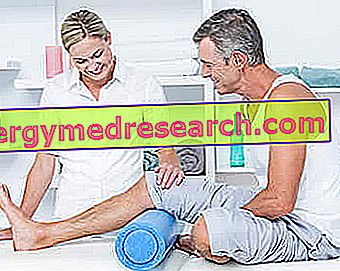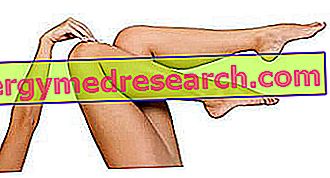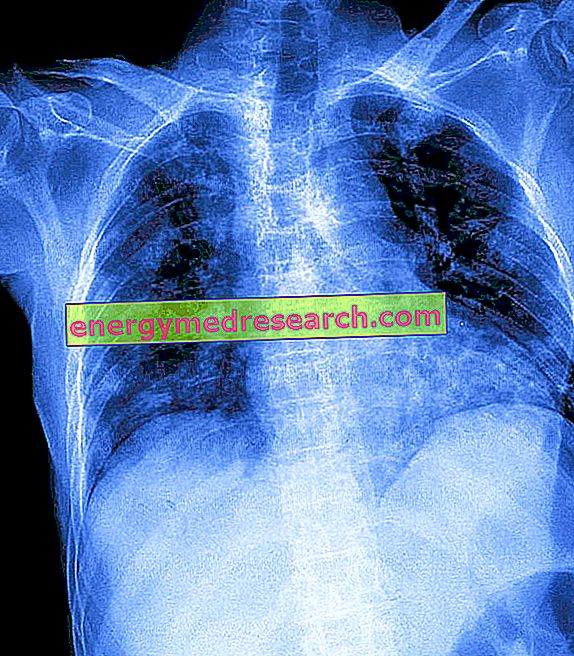Rheumatoid arthritis (hereinafter simply called "arthritis") is a chronic inflammatory disease.
It is a systemic pathology that affects the articular cartilage. The effects can be very serious, disabling and cause irreversible loss of functionality.

It mainly affects symmetrical joints but tendons, synovium, muscles, bags and other tissues are not excluded.
The pathological mechanism of arthritis is based on:
- Immune activation due to viruses or bacteria.
- Uncontrolled reaction and joint damage with chronic inflammation.
The disease compromises joint excursion and all related movements.
Arthritis affects 1-2% of the population. The onset is greater in women and in subjects between the ages of 40-60 years. Early or late episodes are not rare.
Some hypothesize that behavioral and environmental risk factors play a decisive and not only predisposing role.
What to do
- Arthritis is an autoimmune disease related to various factors:
- Familiarity.
- Infections (Human Herpes Virus 6 and Epstein-Barr Virus).
- Other autoimmune diseases.
- Other rheumatic diseases.
- Stress.
- Tobacco smoke.
- Alcohol abuse.
- Nutritional disadvantages.
- Poor oral hygiene and periodontitis from Porphyromonas gingivalis .
- Obesity: this is not necessarily included among the risk factors, but it is established that in obese people rheumatoid arthritis is more serious.
- Aware of any family predisposition it is necessary to adopt a series of preventive measures (see under Prevention).
- Recognizing the symptoms: arthritis is evident in a rather evident way even if sometimes the initial symptoms are neglected or confused with the "seasonal pains". In the full-blown phase, the following occur:
- Swelling and joint deformation.
- Joint pain on palpation and movement.
- Articular redness.
- Joint heat sensation.
- Joint stiffness.
- Sometimes also:
- Temperature.
- Weight loss.
- Anemia and hyperferritinemia.
- Muscle hypotrophy and tendon abnormalities.
- Inflammation of other tissues (eyes, skin, lymph nodes etc.).
- It is important that the diagnosis is early: the figure of reference, after addressing the general practitioner, is that of the rheumatologist. He will perform and prescribe:
- Medical history and physical examination.
- Blood test for the search of typical markers of rheumatoid arthritis (inflammatory molecules, rheumatoid factor, anti-cyclic citrullinated peptide, etc.).
- Articular ultrasound, x-rays, etc.
- Collection and analysis of joint synovial sample.
- With positive diagnosis, conservative therapy is started:
- Choice of suitable physical activities: in contrast to osteoarthritis, arthritis risks damaging the joints more significantly during movements. This requires a more accurate selection of movements that do not cause pain.
- Help with devices for housework or travel.
- Physiotherapy and maintenance of the general physical condition: prevent muscular hypotonia and stiffness, maintaining a satisfactory fitness (the use of a guardian may be useful).
- Drug therapy (anti-inflammatory, immunsuppressive, biological drugs, etc.).
- Medical treatments with heat, ultrasounds and muds.
- Surgery (if necessary).
- Surgical removal of any troublesome subcutaneous nodules.
- After the installation of a prosthesis it is necessary to maintain a satisfactory muscular function (physical activity).
What NOT to do
- Neglecting prevention, especially consciously towards an important family trend:
- Obesity.
- Risk of infection from Human Herpes Virus 6 and Epstein-Barr Virus.
- Lead a stressful lifestyle.
- Smoking and abuse of alcohol.
- Have bad oral hygiene and increase the risk of periodontitis with proliferation of Porphyromonas gingivalis.
- Adopt a diet lacking vitamin D and anti-inflammatory and / or antioxidant molecules.
- Ignore the symptoms, do not seek medical attention or do not continue diagnostic research.
- Choice of unsuitable, painful physical activities that can worsen arthritis.
- When necessary, do not use devices for housework or travel.
- Do not practice physical therapy and motor conservation.
- Do not follow the prescribed drug therapy.
- Do not take the suggested medical treatments.
- Do not resort to surgery (if necessary).
- Do not maintain satisfactory muscle function after installing a prosthesis.
What to eat
- There is no diet suitable for the treatment of arthritis. On the other hand, some molecules may be useful:
- In the treatment of a possible overweight that generates a significant joint overload with increased pain.
- In reducing inflammation.
- In restoring the right levels of vitamin D.
- In the fight against anemia.
In summary:
- When the weight is excessive it becomes essential to practice a weight loss diet. This is hypocaloric. The basic principles are:
- Consume an adequate caloric quantity, or 70% of normal calories.
- Choose foods with a suitable metabolic impact (whole foods and no refined carbohydrates) preventing spikes in blood sugar and insulin.
- Reach a good amount of dietary fiber. It helps keep blood sugar under control, modulates fat absorption and positively affects estrogen levels.
- Keep the fraction of simple carbohydrates no more than 10-16% of total calories (it is sufficient to eliminate all sweet foods while maintaining 4-6 portions of fruit and vegetables in addition to 1-3 servings of milk and yogurt).
- Keep the fat fraction no more than 25-30% of the total calories, preferring the "good" ones (raw-pressed vegetable oils and medium fat blue fish) compared to the "bad" ones (saturated, hydrogenated, bifractionated, etc.).
- In the event that arthritis inflames one or more joints it may be useful to increase the intake of nutrients with a strong anti-inflammatory function:
- Omega 3: are eicosapentaenoic acid (EPA), docosahexaenoic (DHA) and alpha linolenic acid (ALA). They play an anti-inflammatory role. The first two are biologically very active and are found mainly in: Sardinian, mackerel, bonito, alaccia, herring, alletterato, ventresca of tuna, needlefish, algae, krill etc. The third is less active but constitutes a precursor of EPA; it is mainly contained in the fat fraction of certain foods of vegetable origin or in the oils of: soy, linseed, kiwi seeds, grape seeds, etc.
- Antioxidants:
- Vitaminics: the antioxidant vitamins are carotenoids (provitamin A), vitamin C and vitamin E. Carotenoids are contained in vegetables and red or orange fruits (apricots, peppers, melons, peaches, carrots, squash, tomatoes, etc.); they are also present in shellfish and milk. Vitamin C is typical of sour fruit and some vegetables (lemons, oranges, mandarins, grapefruit, kiwi, peppers, parsley, chicory, lettuce, tomatoes, cabbage, etc.). Vitamin E is available in the lipid portion of many seeds and related oils (wheat germ, maize germ, sesame, kiwi, grape seeds, etc.).
- Minerals: zinc and selenium. The first is mainly contained in: liver, meat, milk and derivatives, some bivalve molluscs (especially oysters). The second is contained above all in: meat, fishery products, egg yolk, milk and dairy products, fortified foods (potatoes, etc.).
- Polyphenols: simple phenols, flavonoids, tannins. They are very rich: vegetables (onion, garlic, citrus fruits, cherries, etc.), fruit and related seeds (pomegranate, grapes, berries, etc.), wine, oilseeds, coffee, tea, cocoa, legumes and whole grains, etc.
- To increase the intake of vitamin D or calciferol: increase the consumption of fish, fish oil and egg yolk.
- Against anemia it is necessary to guarantee the intake of iron (possibly in conjunction with vitamin C), vitamin B12 and folic acid.
- To guarantee the intake of iron, especially haem and ferrous (2+), it is necessary to eat:
- Muscle tissue: both of terrestrial and aquatic animals: horsemeat, bovine, swine, avian, fish, whole molluscs (also land snails), whole crustaceans etc.
- Eggs: any, especially the yolk.
- Offal and fifth quarter: mainly spleen and liver, but also marrow, diaphragm, heart, etc.
NB . Vitamin C or ascorbic acid is a thermolabile molecule and is degraded by cooking. This means that to ensure their intake it becomes necessary to consume many raw foods. Moreover, being involved in the absorption of low-available iron, it is important that it is taken with specific foods.
- To ensure the intake of vitamin B12 (cobalamin) it is necessary to eat:
- The same foods source of heme iron; in addition, certain bacteria are rich in vitamin B12.
- To ensure the intake of folic acid it is necessary to eat: liver, vegetables (eg tomatoes), sweet fruit (orange, apple, etc.) and legumes (eg beans).
NB . Folic acid is also a thermolabile molecule and is degraded by cooking. This means that to guarantee their contribution it is advisable to eat specific foods in a raw form.
- We remind you that certain foods may contain anti-nutritional ingredients that reduce iron absorption (phytic acid and oxalic acid - relative phytates and oxalates). To reduce its content, you need to practice:
- Soaking.
- Fermentation (yeasts or bacteria).
- Cooking.
NB . Since cooking inhibits the nutritional principles but limits the availability of thermolabile vitamins, it is recommended that raw and cooked foods are equally present in the diet. It is advisable to reserve heat treatment especially for legumes and cereals, while most fruits and vegetables could be eaten raw.
What NOT to Eat
- In the case of obesity, it is advisable to reduce the weight by decreasing the caloric intake by about 30% and leaving the nutritional distribution (balanced) unchanged:
- It is advisable to eliminate junk foods and beverages, in particular fast foods and sweet or savory snacks.
- It is also necessary to reduce the frequency of consumption and the portions of: pasta, bread, pizza, potatoes, derivatives, fatty cheeses, meat and oily fish, salami, sausages, sweets, etc.
- Determining the elimination of alcohol: these drinks are related to an increase in the incidence of arthritis. They also promote overweight and compromise drug metabolism.
Natural Cures and Remedies
- Mud baths: they are useful in reducing joint pain but do not act on the triggering cause.
- Herbal medicine:
- Boswellic acid.
- Curcumin.
- Devil's claw.
- Euonymus alatu.
- Tripterygium wilfordii (can cause serious side effects).
Pharmacological care
They are anti-inflammatory, pain-relieving and specific for cartilage preservation.
- Opioids: they have a very powerful pain-relieving effect but they are addictive.
- Hydrocodone: for example Vicodin; it is not for sale in Italy.
- NSAIDs or non-steroidal anti-inflammatory drugs to be taken orally and systemically. They reduce pain and facilitate joint mobility; fairly short treatment cycles are recommended because of potential side effects (impaired stomach and liver). They are more used:
- Acetylsalicylic acid: for example Aspirin, Vivin C.
- Ibuprofen: for example Brufen, Moment and Subitene.
- Naproxen: for example Aleve, Naprosyn, Prexan and Naprius.
- Diclofenac: for example Fastum Painkiller and Dicloreum.
- Celecoxib: eg Aleve, Naprosyn, Prexan and Naprius.
- Cortisonic: systemic to be taken orally or by injection. Generally not recommended because they can cause thinning of bones, ecchymoses, weight gain, cataracts, diabetes, hypertension and swelling of the face. They are used ONLY if the inflammation reaches very high levels:
- Dexamethasone: for example Soldesam and Decadron.
- Anti-arthritis and immunomodulators: they hinder the degeneration of the disease by acting on the immune system:
- Penicillamine: for example Sufortan.
- Hydroxychloroquine: for example Plaquenil.
- Chloroquine: for example Clorochina and Cloroc FOS FN.
- Methotrexate: eg Reumaflex, Methotrexate HSP and Securact.
- Sulfasalazine: for example Salazopyrin.
- Leflunomide: for example Leflunomide medac, Arava, Leflunomide Teva, Leflunomide Winthrop and Repso.
- Azathioprine: for example Azathioprine, Immunoprin and Azafor.
- Biological drugs: they are drugs that inhibit the tumor necrosis factor alpha. They are used in active rheumatoid arthritis and resistant to classic drugs if after 2 years of treatment there are no benefits:
- Adalimumab: for example Humira.
- Infliximab: eg Remicade.
Prevention
- Not smoking.
- Don't overdo alcohol.
- Stay normal or lose weight in case of obesity.
- Adopt a diet sufficiently rich in vitamin D; it can also be useful to check the intake of omega 3 and antioxidants.
- Practice regular motor activity.
- Avoid contagion from Human Herpes Virus 6 and Epstein-Barr Virus.
- Treating oral hygiene and reducing the risk of periodontitis with proliferation of Porphyromonas gingivalis .
- Lead a less stressful lifestyle as possible.
Medical Treatments
- Application of heat: they serve to alleviate the symptoms of arthritis. The methods are: heating pads, paraffin baths, heated pool exercises and compresses. Useful for reducing pain and increasing joint excursion before physiotherapy or exercise.
- Tecar therapy: it is a therapeutic method that uses an electric condenser to treat muscle joint injuries. The mechanism of tecarterapia is based on restoring the electric charge in the injured cells to make them regenerate more quickly.
- Ultrasound: this system uses high frequency acoustic waves. It is very useful as an anti-inflammatory, stimulating edematous reabsorption and to dissolve the adhesions that are formed during healing. It produces heat and increases the permeability of cell membranes.
- Cortisone infiltration: intra-articular injections may be necessary when common drug therapy has no effect. Given the side effects of cortisone, the tendency is to administer it as a last resort
- Surgery:
- Synovectomy: removal of the synovial membrane responsible for cartilage destruction.
- Osteotomy: remodeling of deformed bone from arthritis.
- Installation of prostheses: it is essential when pain and anatomical alteration become invalidating. In the past there was a tendency to resort to it as late as possible; today the priority of functional maintenance is recognized. Especially in mature or senior citizens, staying in bed significantly compromises functional capacity and lengthens recovery after surgery. The complexity, the invasiveness and the type of substitution are of various types. Today, the transplanted patient is able to move the joint one day after the operation. It is not applicable in some joints.
- Physiotherapy and motor therapy: useful both before and after surgery. Optimize maintenance of function and post-surgical functional recovery.



